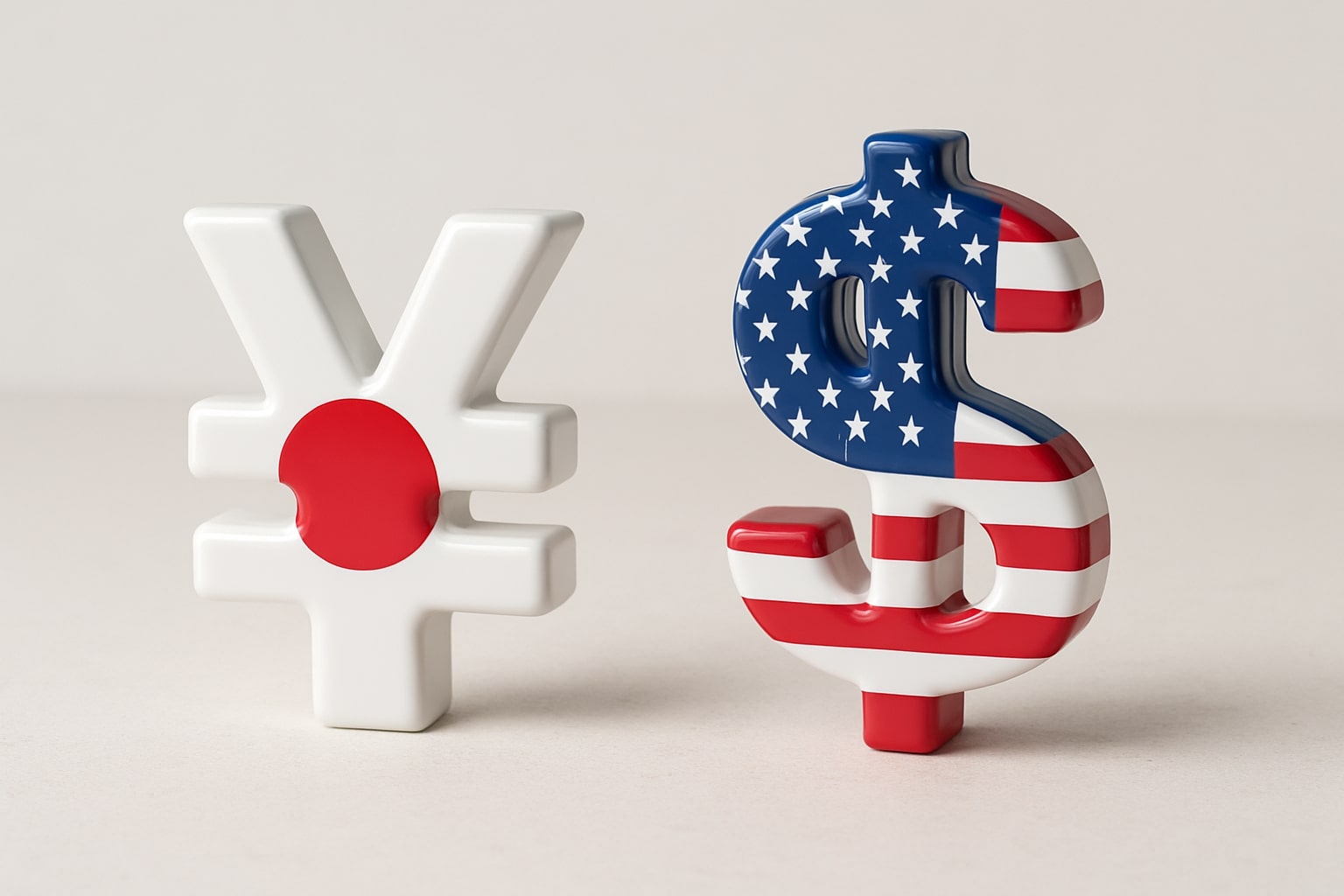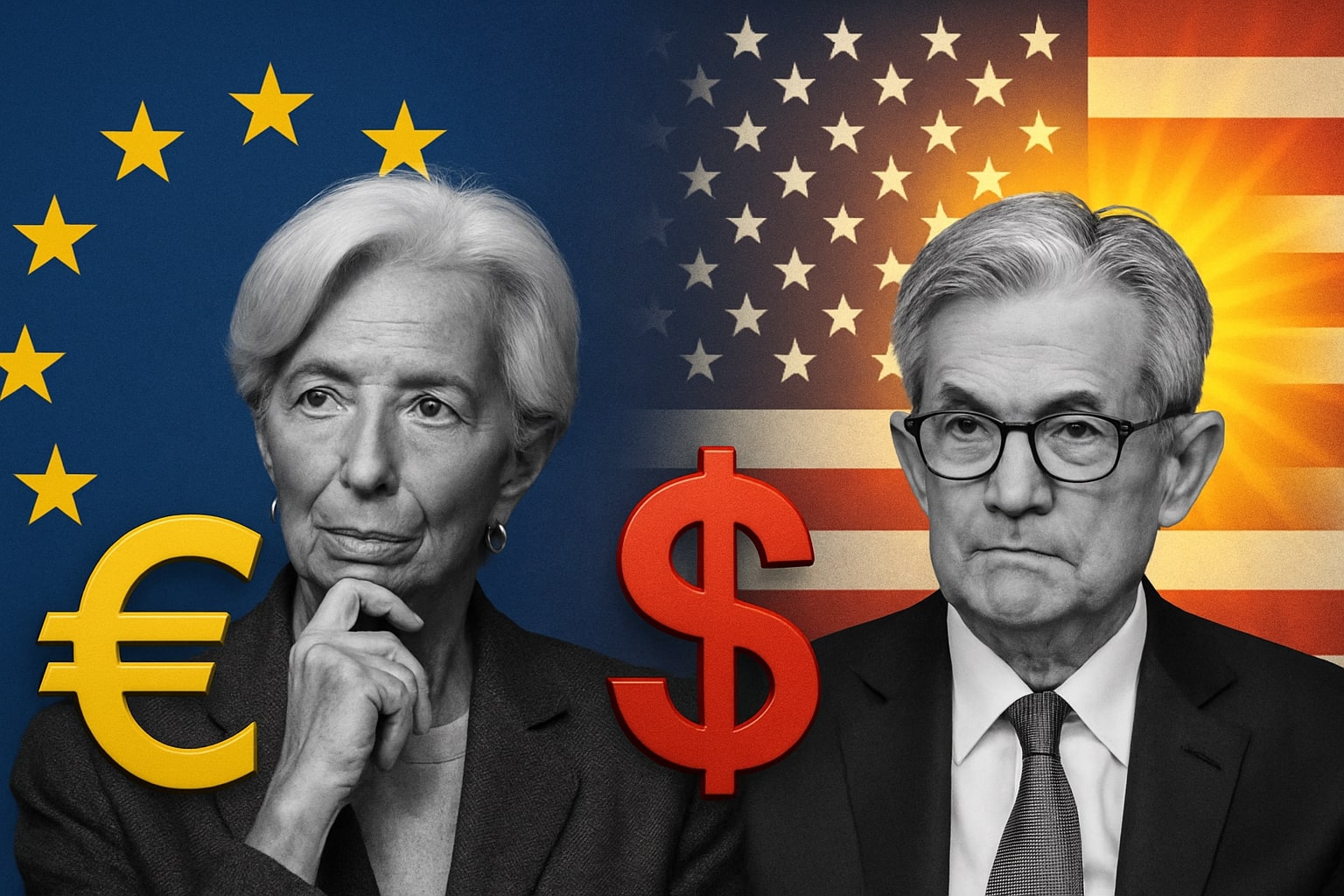
JPY/USD Price Forecast: Yen Surges to 146.66 as Fed Dovish Tilt Shakes Dollar
Powell’s Jackson Hole remarks fuel 90% odds of a September cut, while Japan’s sticky 3.1% inflation and wage growth sustain BoJ policy pressure | That's TradingNEWS
JPY/USD Slides as Powell Fuels Fed Cut Bets While Japan Inflation Holds at 3.1%
The JPY/USD pair whipsawed on Friday, retreating sharply after touching an intraday high of 148.78 before settling near 146.66, almost a full percentage point lower. The pullback came immediately after Jerome Powell’s Jackson Hole speech, where he emphasized downside risks to U.S. jobs and rising uncertainty from tariffs. Markets repriced rate cut probabilities, with the CME FedWatch now showing a 90% chance of a 25 bps cut in September, up from 70% earlier, sending U.S. Treasury yields and the dollar index down. This reversal marked the yen’s strongest single-day gain in three weeks, highlighting how quickly sentiment in JPY/USD shifts on Fed tone.
Sticky Japan Inflation Raises BoJ Pressure but Weak Exports Complicate Policy
Japan’s July CPI data showed headline inflation easing slightly from 3.3% to 3.1%, the lowest since November 2024 but still well above the BoJ’s 2% target. Core-core inflation excluding food and energy held at 3.4%, keeping underlying pressures alive. Sticky inflation paired with wage growth, as the central government backed a record ¥63 minimum wage hike, bolsters arguments for policy normalization. Yet exports dropped 2.6% year-on-year, their third straight monthly decline, as higher U.S. tariffs curbed demand. This divergence—domestic cost pressure versus external weakness—keeps BoJ policymakers trapped between the risk of tightening too soon and the risk of allowing inflation to become entrenched.
U.S. Labor Market Softens and Treasury Yields Retreat
Recent U.S. data reinforced the dovish repricing. Jobless claims rose by 11,000 to 235,000, the sharpest increase in three months, while continuing claims climbed to a four-year high. The Philadelphia Fed Manufacturing Index slipped to -0.3 from 15.9, reinforcing concerns of a slowdown. Two-year Treasury yields fell under 3.70%, while the 10-year yield eased toward 4.25%, reducing dollar support. The dollar index dropped from its two-week peak at 98.83 back toward 97.75, erasing weekly gains and allowing the yen to rally.
Technical Outlook: JPY/USD Stalls Below 149.00, Key Levels in Play
From a chart perspective, JPY/USD broke above 148.00 mid-week but failed to sustain momentum, retreating toward 146.60. Analysts highlight the 200-day SMA near 149.00 as critical resistance, with a psychological barrier at 150.00 looming just above. On the downside, immediate supports are stacked at 147.80, 147.30, and the round 147.00 figure. A decisive close below 147.00 would negate the bullish setup and reopen risk toward 145.00, while regaining 148.80 could revive bullish momentum with a path toward 149.20.
Investor Positioning and Policy Divergence Define Sentiment
Traders remain split. Some see Japanese sticky inflation as a trigger for a rate hike later in 2025, with Reuters surveys showing 63% of economists expecting the BoJ to lift rates to 0.75% by year-end. Others focus on U.S. cuts, with markets pricing two moves lower before December. That policy divergence is narrowing, making JPY/USD highly sensitive to incoming data. The yen also benefited from political stabilization after Tokyo and Washington agreed to cut reciprocal tariffs from 25% to 15%, lowering import costs and easing some inflationary strain.
Short-Term Range and Market Sentiment
For now, traders are watching whether Powell’s dovish tilt continues to anchor expectations. If U.S. inflation signals cool further and labor markets weaken, JPY/USD could drift below 146.00, setting up tests of 145.00 support. Conversely, if Japan’s inflation and wage growth force BoJ Governor Ueda to signal imminent tightening, the yen could strengthen rapidly, potentially breaking into the 144–145 band. At the same time, a hawkish Fed surprise would push the dollar back toward 150.00, but Powell’s tone indicates the balance of risk leans the other way.
That's TradingNEWS
Read More
-
Baidu Stock Price Forecast - Bidu at $120 AI, Chips and Robotaxis Clash With China Macro Fears
15.12.2025 · TradingNEWS ArchiveStocks
-
XRP Price Forecast - XRP-USD Holds $1.90 Support as Bulls Target a Break Toward $2.60–$2.70
15.12.2025 · TradingNEWS ArchiveCrypto
-
Oil Price Forecast - Oil Slip Toward $60 as Oversupply Grows and Tanker Rates Explode
15.12.2025 · TradingNEWS ArchiveCommodities
-
Stock Market Today - Dow, S&P 500 and Nasdaq Futures Climb as Gold and Tsla Stock Jumps and Wall Street Awaits Jobs Data
15.12.2025 · TradingNEWS ArchiveMarkets
-
GBP/USD Price Forecast - Pound Holds 1.34 Ahead of BoE 3.75% Cut and Key US Jobs Data
15.12.2025 · TradingNEWS ArchiveForex


















